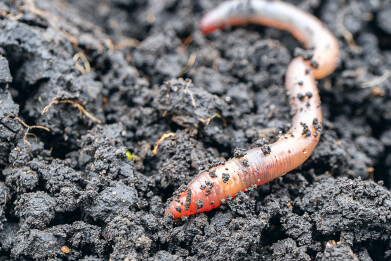Soil testing
UK loses more than a third of its earthworms in 25 years
Nov 08 2024
New research highlights a dramatic decline in the UK’s earthworm populations, which have decreased by an estimated 33-41% over the last 25 years. This reduction has significant implications for soil health, biodiversity, and ecosystems across the country. Earthworms are crucial to the environment, supporting nutrient cycling, soil structure, and serving as food for many species. However, their numbers appear to be plummeting due to modern agricultural practices, habitat loss, and other environmental changes.
Impacts and causes
Earthworms play a vital role in maintaining healthy soils. They break down organic material, releasing nutrients back into the soil and improving its structure. This decomposition process enhances soil aeration, water retention, and fertility. Additionally, earthworms form an essential link in food chains, supporting a variety of birds, mammals, and invertebrates. The decline in their populations could lead to cascading effects throughout ecosystems, potentially impacting the species that depend on them for sustenance.
Several factors are driving the reduction in earthworm numbers. Agricultural practices, particularly the use of pesticides and inorganic fertilizers, are a significant cause. Frequent plowing disrupts soil structure, destroys earthworm burrows, and increases their vulnerability to predators. The shift from organic fertilizers to chemical-based alternatives further harms earthworms, as while organic matter generally boosts their numbers, inorganic chemicals have been found to reduce their populations over time. Urban expansion also contributes to habitat loss, squeezing earthworm populations into ever-smaller areas.
Habitat-specific effects
The decline in earthworm abundance varies across different habitats. Agricultural lands and broadleaved woodlands have seen the most pronounced reductions. In farmlands, pastures and grasslands are especially impacted due to intensive farming practices, which include high pesticide use and soil compaction from livestock. In woodlands, the decline is largely attributed to soil drying, particularly in southeastern England, where warmer, drier summers reduce the moisture content earthworms need to thrive. In contrast, more remote or less human-influenced habitats have shown more stability in earthworm populations, though they are not entirely unaffected.
Bird species that depend on earthworms as a food source are also affected. Some species, such as thrushes and lapwings, are shifting habitats due to reduced food availability in their traditional feeding grounds. This displacement places additional pressure on ecosystems as birds congregate in new areas, potentially straining food resources and altering local biodiversity.
The contrast with other invertebrates
While earthworms are showing significant declines, other soil invertebrates, like tipulid larvae (leatherjackets), do not appear to be experiencing the same downward trend. Tipulids are both agricultural pests and a key food source for certain bird species. Unlike earthworms, they have benefitted in some regions from reduced pesticide use, especially in organic farming areas, and from favorable climate conditions. However, while they may be stable for now, future population trends remain uncertain, highlighting the need for continued observation and analysis.
Broader ecological impacts
The decrease in earthworm populations could spell trouble for soil health and agricultural productivity. Without enough earthworms to aerate and enrich the soil, soil compaction, erosion, and nutrient depletion become more likely, which could impact crop yields. Earthworm activity also helps sequester carbon in soil, contributing to natural carbon storage and climate change mitigation. Fewer earthworms could reduce these beneficial effects, making it more challenging to maintain soil quality and store carbon effectively.
The drop in earthworm numbers also highlights a broader biodiversity crisis affecting UK ecosystems. Their loss reflects not only the vulnerability of invertebrate populations but also the cascading effects that can result from changes to fundamental ecosystem components. For example, a reduction in earthworms affects the nutrient availability for plants, which can then impact larger herbivores and the animals that prey on them.
The need for long-term monitoring
Given the essential role of earthworms and other soil invertebrates, there is a growing call for a long-term, large-scale monitoring system to track their populations and health. Such a system could be supported by citizen science efforts to gather data across different habitats, helping to capture the status of soil invertebrates over time. This monitoring would provide valuable insights into the environmental changes impacting soil ecosystems and inform strategies to address biodiversity loss.
The decline in earthworms is a stark reminder of the complex and interconnected nature of ecosystems. While the full scope of the decline’s impact is still being understood, it underscores the need for careful management of agricultural practices and habitat conservation. By taking steps to preserve soil health and invertebrate populations, the UK can support biodiversity and sustain the essential services that healthy soils provide.
Digital Edition
IET 35.2 March
April 2025
Air Monitoring - Probe Sampling in Hazardous Areas Under Extreme Conditions - New, Game-Changing Sensor for Methane Emissions - Blue Sky Thinking: a 50-year Retrospective on Technological Prog...
View all digital editions
Events
May 06 2025 Nuremberg, Germany
May 10 2025 Karachi, Pakistan
May 11 2025 Vienna, Austria
May 11 2025 Seoul, South Korea
Salon Analyse Industrielle & Instrumentation
May 14 2025 Paris, France





.jpg)
_(4427399123)-(2).jpg)












